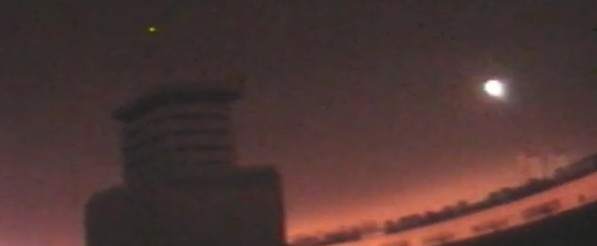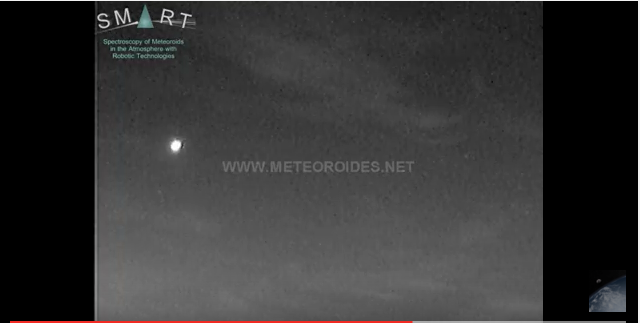The ball five times brighter than the full moon could be seen in much of Spain and has been collected by the detectors of astronomical complex of La Hita (Toledo).
A meteorite impact Wednesday in the province of Cordoba, after generating a fireball, the fourth in a few days which is registered in the Iberian peninsula.
the ball, five times brighter than the full moon , has been seen in much of Spain and has been collected by the detectors astronomical complex of La Hita (Toledo).
the phenomenon was generated in the early hours of last Wednesday by the impact with the atmosphere of a rock from asteroid , which had a mass of about 400 kilos and crashed over 60,000 kilometers per hour.
As indicated today in a press release the astronomical complex of La Hita, the impact occurred at 2:32 am Wednesday and was recorded by the detectors that the University of Huelva in these facilities of La Puebla de Almoradiel (Toledo) and in Seville, at the Observatorio del Arenosillo (Huelva), and the observatory at Calar Alto (Almería).

the sudden shock against air raised the temperature of the rock to queestá turned incandescent, thus resulting in a fireball in which the material is disintegrated as losing altitude.
His career in the atmosphere was accompanied by several blasts, which alerted some witnesses who could see how across the sky, especially in Andalusia. But, unlike the rocks that produced the fireballs recorded in the previous days, in this case a part of the material would itself managed to survive and hit the ground as a meteorite, according to the resort of La Hita.
This meteorite has fallen in the province of Cordoba and have a mass of about a kilo, although it is likely to have been broken into several pieces before reaching the ground.

(video capture)
the rock came from an asteroid known as 2013DF, a body the size of a 15-storey building that came closer than usual to Earth on February 27, three years ago, in 2013.
it is likely that during this approach, the rock that struck last day 24 on Andalusia desprendiese surface 2013DF, following thereafter slightly different from its parent asteroid orbit, that three years later would led to collide with our planet.
is not excluded that in the near future more balls of very bright fire may occur. In fact, another asteroid, with a similar to that of a 10-storey building size, 2013TX68, only the veinticincoava part of the distance separating Earth will approach on 5 March to Earth over a distance equal the . moon
Reproduced under license CreativeCommons non-commercial -Recognition 3.0 Spain –
Original article here
No comments:
Post a Comment